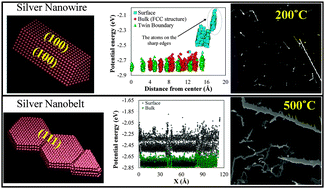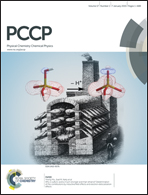How morphology and surface crystal texture affect thermal stability of a metallic nanoparticle: the case of silver nanobelts and pentagonal silver nanowires
Abstract
Thermal instability of metallic nanoparticles is typically attributed to chemical attack by contaminants. However, thermodynamic stability is independent of other affecting parameters. The importance of this will be clarified when the structural change toward a more stable thermodynamic condition may be followed by a chemical reaction with the surroundings, which may cause a wrong diagnosis. In this research, molecular dynamics simulations and experimental observations were performed to investigate the effect of crystallography and surface texture on stability at high temperature using two closely related model nanoparticles: silver nanobelts and pentagonal nanowires. Previously, the instability of silver nanowires was associated with sulfidation of the wire at high temperature. However, we found that the silver nanowires are inherently unstable at high temperature, degrading due to the high-energy nature of the nanowire's predominately (100) crystallographic surface and pentagonal geometry. In contrast, the silver nanobelts resist thermal degradation up to 500 °C because of their predominately low-energy (111) crystallographic surfaces. In this case study, we successfully demonstrate that inherent thermodynamic stability driven by morphology is significant in metallic nanoparticles, and should be investigated when selecting a nanoparticle for high temperature applications. Moreover, we identify a new one-dimensional nanoparticle, the silver nanobelt, with inherent high-temperature stability.


 Please wait while we load your content...
Please wait while we load your content...